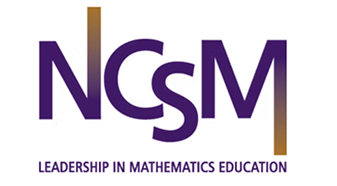Application fitness
Regularly identify generalization issues, with frequent comparisons between significant real-world examples and a current analysis.
K–2 Competencies
Identify whether a pattern applies to another situation or not.
Classroom resources
Data Science Starter Kit Module 4: Drawing Conclusions - Interpreting Problems and Results
Welcome to one of the most critical skills in data science—learning how to draw valid conclusions from data and understanding what those conclusions can and cannot tell us. This module focuses on the thinking skills that separate good data science from misleading claims.🔗
Interpreting Problems and Results isn’t about complex statistical tests or advanced mathematics. It’s about developing the intellectual honesty and critical thinking skills to say, “Based on this data, here’s what we can reasonably conclude, here’s what we’re not sure about, and here’s what we still need to investigate.”
3–5 Competencies
Recognize that a result or pattern from data does not always extend to other situations.
Classroom resources
Data Science Starter Kit Module 4: Drawing Conclusions - Interpreting Problems and Results
Welcome to one of the most critical skills in data science—learning how to draw valid conclusions from data and understanding what those conclusions can and cannot tell us. This module focuses on the thinking skills that separate good data science from misleading claims.🔗
Interpreting Problems and Results isn’t about complex statistical tests or advanced mathematics. It’s about developing the intellectual honesty and critical thinking skills to say, “Based on this data, here’s what we can reasonably conclude, here’s what we’re not sure about, and here’s what we still need to investigate.”
6–8 Competencies
Identify various factors that may cause data in a dataset to insufficiently represent or apply to other situations.
Identify characteristics of data-based predictions that easily and do not easily generalize to many situations.
Classroom resources
Blinking Out Activity by DataClassroom
The purpose of thislesson is to help students understand how long-term ecological data collectionenables scientists to identify environmental changes and population trends thatwould be invisible with short-term studies. Students will analyze real fireflypopulation data to make evidence-based claims about species decline whilelearning about sampling effort, data collection challenges, and the scientificmethod in environmental research.
Data Science Starter Kit Module 4: Drawing Conclusions - Interpreting Problems and Results
Welcome to one of the most critical skills in data science—learning how to draw valid conclusions from data and understanding what those conclusions can and cannot tell us. This module focuses on the thinking skills that separate good data science from misleading claims.🔗
Interpreting Problems and Results isn’t about complex statistical tests or advanced mathematics. It’s about developing the intellectual honesty and critical thinking skills to say, “Based on this data, here’s what we can reasonably conclude, here’s what we’re not sure about, and here’s what we still need to investigate.”
9–10 Competencies
Examine and identify common generalization issues from data-based conclusions in the media.
Identify and list analysis strategies for a given data-driven conclusion to better generalize to other populations or situations.
Classroom resources
Coffee Filter Parachutes by DataClassroom
The purpose of this lesson is to help students apply engineering design principles and data analysis to solve real-world problems by analyzing parachute performance data and making evidence-based recommendations for different stakeholders. Students will use physics concepts, mathematical modeling, and statistical analysis to evaluate competing designs and communicate technical recommendations to diverse audiences with different performance requirements.
Data Science Starter Kit Module 4: Drawing Conclusions - Interpreting Problems and Results
Welcome to one of the most critical skills in data science—learning how to draw valid conclusions from data and understanding what those conclusions can and cannot tell us. This module focuses on the thinking skills that separate good data science from misleading claims.🔗
Interpreting Problems and Results isn’t about complex statistical tests or advanced mathematics. It’s about developing the intellectual honesty and critical thinking skills to say, “Based on this data, here’s what we can reasonably conclude, here’s what we’re not sure about, and here’s what we still need to investigate.”
11–12 Competencies
Analyze a data generalization issue in media or real-world situations and discuss its significant impacts and the importance of addressing generalization errors.
Implement multiple strategies to generalize data-based conclusions to new populations or situations. e.g., add additional context or control variables, repeat the analysis with new collection or sample, test a model with a different dataset
Evaluate the advantages and disadvantages of automated tools that rely on large datasets for universal predictions. e.g., prediction algorithm for airline ticket prices or home mortgage application assessment, AI model for facial recognition, autonomous vehicle model trained on city roads
Classroom resources
Gene Expression in Stem Cells by DataClassroom
The purpose of this lesson is to help students apply advanced statistical analysis and bioinformatics approaches to real genomic research data, investigating gene expression differences between specialized cells and stem cells. Students will conduct sophisticated hypothesis testing, evaluate data distributions, perform multiple comparison analyses, and interpret biological significance of statistical findings in the context of cutting-edge regenerative medicine research.
Data Science Starter Kit Module 4: Drawing Conclusions - Interpreting Problems and Results
Welcome to one of the most critical skills in data science—learning how to draw valid conclusions from data and understanding what those conclusions can and cannot tell us. This module focuses on the thinking skills that separate good data science from misleading claims.🔗
Interpreting Problems and Results isn’t about complex statistical tests or advanced mathematics. It’s about developing the intellectual honesty and critical thinking skills to say, “Based on this data, here’s what we can reasonably conclude, here’s what we’re not sure about, and here’s what we still need to investigate.”
Advanced Competencies
Classroom resources
Support other teachers by sharing a resource
Do you have a lesson plan, video, or tip that could help others teaching this topic?
Share feedback on the Learning Progressions
Your feedback helps us improve these progressions for teachers around the world. Thank you!
Share feedback on the Learning Progressions
Your feedback helps us improve these progressions for teachers around the world. Thank you!
Share a classroom resource
Suggesting a resource helps students around the world learn essential data science skills.










.png)














